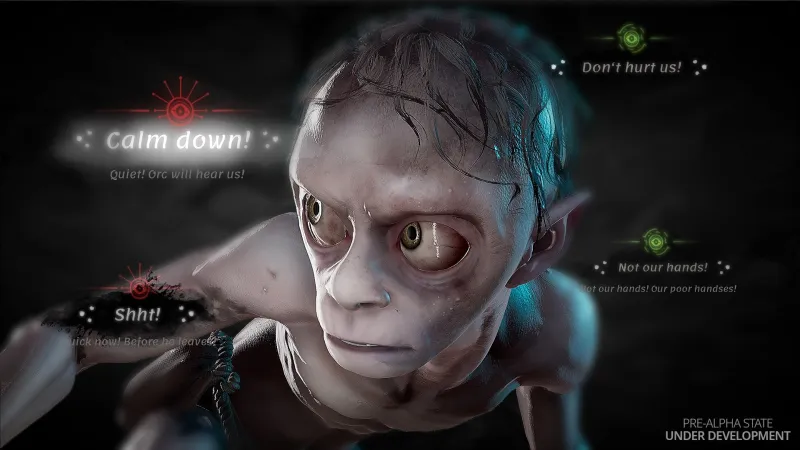
Marvel’s Avengers Details Patrol Mode Update | Game Rant
Written by Richard WarrenRising Hell Is a New Roguelite Platformer Inspired By Heavy Gothic Metal
Written by Rory YoungSkyrim: Everything You Need To Know About The Argonians
Written by Grey UsseryLord of the Rings: Gollum Shows Off First Gameplay Footage
Written by Kean SullivanEpic Games Store Reveals Next Week's Free Game | Game Rant
Written by Ron CamachoApex Legends Giving Away Free Content To Make Up for Errors
Written by Philip TrahanThymesia Is An Action Game Starring A Plague Doctor That Turns Diseases Into Weapons
Written by Marcus Stewart 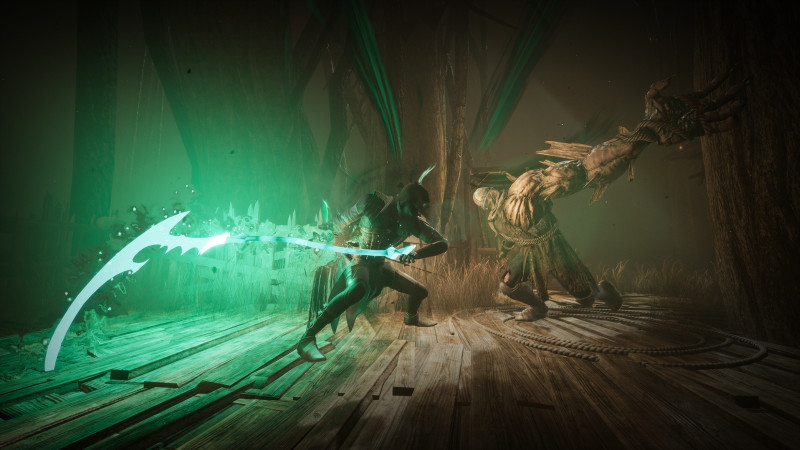
Thymesia is a newly announced action game by OverBorder Studio and Team17 that puts players in the role of a plague doctor who can turn diseases into physical weapons. That intriguing premise is certainly one way to turn some heads, and the game’s debut trailer transforms that curiosity into attention by highlighting its action-packed combat.
Players control Corvus, a plague doctor who can not only clash blades with the best of them, but who can also seize diseases from from infected enemies and use them offensively. An example is shown in the debut trailer where Corvus transforms illnesses into Green Lantern-esque constructs of weapons like scythes, spears, and swords. Corvus’ stats can be customized in a way to create different builds for players to mold the butt-kicking plague doctor of their preference.
Click here to watch embedded mediaAs you see in the trailer, Thymesia is an action game through and through. Combat is fast-paced with an emphasis on tearing the mutated, tough-as-nails enemies to shreds with rapid strikes while dashing and parrying to defend yourself. The quick tempo looks appealing (as someone who enjoys a good stylish action game), and I’m curious to learn more about how the other ways diseases function in combat.
Thymesia takes place in a plague-ridden dark fantasy world, However, we don’t know story specifics yet other than you’re trying to regain Corvus’ memories. What we do know is that the game will feature different endings to encourage multiple playthroughs. Exploration looks reminiscent of Dark Souls, with a gloomy atmosphere and medieval trappings.
If you think Thymesia looks up your alley, you’ll want to keep an eye out for a release date; right now, the information there is that it’s coming sometime this year. It’ll be available to purchase on PC, with no word on a console release as of yet. What do you think of Thymesia's creative approach to the action genre? Let us know in the comments!
The Lord of the Rings: Gollum Preview – Escape From Barad Dur
Written by Marcus Stewart 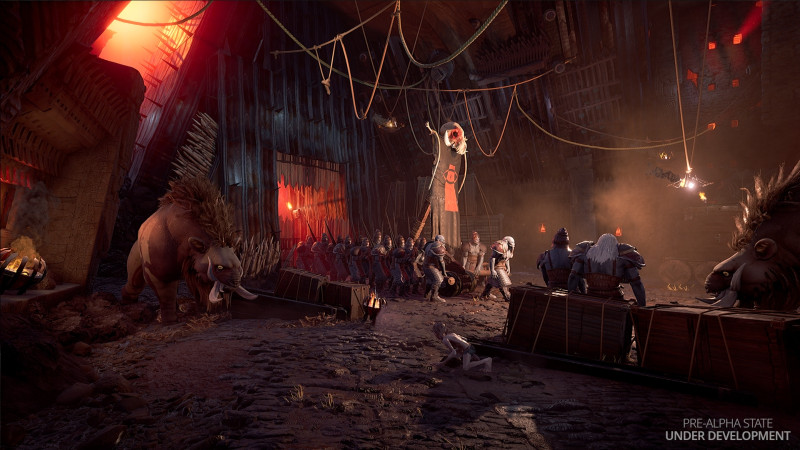
The Lord of the Rings: Gollum was first announced in 2019, and it was a bit of a surprise. Instead of featuring the noble characters everyone loves, it puts players in control of a ring-obsessed, evil wretch of a hobbit. It’s an idea that’s both head-scratching and cool. On the one hand, experiencing Tolkein’s universe through a perspective as fascinating as the former Sméagol sounds fantastic. On the other hand, how do you build an entire game around a character who generally isn’t known for his imposing stature, heroic qualities, or combat finesse? In a recent demo, Daedalic Entertainment showed us what Gollum is capable of and how his unique talents translate to gameplay.
It’s important to note that the footage I watched was apparently 10 months old, and Daedalic noted that a fair bit of it has changed since then. Still, it offered a good idea of what the team is working to achieve. The Lord of the Rings: Gollum emphasizes the character’s two primary strengths: climbing and sneaking. The demo sees Gollum ascending through orc-infested Barad Dur tower in Mordor where he recently escaped slavery at the hands of Sauron.
Gollum needs to reach the surface and, thankfully, is an excellent climber. After all, he’s had hundreds of years of practice. Gollum can wall-jump, slide down surfaces, swing from poles, leap wall-to-wall, and perform other agile feats. A stamina meter dictates how long Gollum can maintain more strenuous acts such as sprinting or hanging. Levels facilitate platforming by emphasizing verticality, an architectural element Daedalic says is in line with Tolkien’s original building designs. Expect to see plenty of spectacular views from atop tall structures.
Click here to watch embedded mediaAs Gollum climbs and scurries his way through hostile territory, he eventually sneaks up on a guard and we see how his dual personas come into play. Since Gollum is the dominant personality at all times, Sméagol doesn’t surface much except in these scenarios where players can choose to either act upon Sméagol’s more benevolent nature or give into Gollum’s penchant for violence. In this case, that means whether or not to kill or spare an oblivious guard.
Despite appearances, Daedalic says that just because Sméagol’s options are deemed “good” doesn’t mean they’re always the right course of action. Gollum didn’t survive this long by being nice, and sometimes a more ruthless approach is necessary. Choices matter, though, and whether or not you choose to help or betray the characters you meet will have ramifications down the line. Gollum wins this time, and he leaps around the guard’s neck to perform a stealth kill.
The next area Gollum enters is littered with orcs. Lighting plays a large role in stealth, as sticking to the shadows keeps Gollum hidden from view. If he’s spotted, players have to flee; confronting enemies head-on spells doom for our pathetic friend. Noise is also important. Enemies have acute senses of hearing, and every action Gollum performs makes some kind of sound. Thankfully, Gollum also possesses extra-sensory abilities that allow him to, as Daedalic puts it, “see sounds," which lets players know how much noise they’re making as well as detect other characters around them. Gollum also has an inventory for carrying items that can distract characters as well as food to heal himself.

Levels are large and sports multiple paths, giving you plenty of options for choosing how to proceed through them. Daedalic hopes this will encourage multiple playthroughs since you can tackle the game in different ways.
After successfully sneaking through this minefield of orcs, Gollum meets up with a human named Grashneg, whom he encountered earlier in the game. For a character who is famously volatile, Gollum is surprisingly fond of Grashneg, and the two agree to work together. Cooperating with other characters plays a significant role in the game, as allies sport abilities that Gollum lacks, and vice-versa. In this case, Grashneg can use his strength to plow through obstacles but can’t see in the dark as well as Gollum can, which is where he picks up the slack. The two work together and Gollum soon finds a literal light at the end of the tunnel: a crack in the wall with daylight pouring in. As he makes his way outside, the demo concludes.
Daedalic confirms that the game will see Gollum venture outside of Mordor (as in the books) where he’ll encounter the monstrous spider, Shelob, and even venture into the land of the elves. Along the way he’ll run into some familiar faces, though Daedalic isn’t spilling the beans on who makes appearances just yet. Being a nearly year-old demo, the game looked undeniably rough. Animations looked rather stilted and cutscenes had an awkward quality to them. But the studio promises the game is currently in a much better state than what we were shown. We can only hope that things come together smoothly when The Lord of the Rings: Gollum launches sometime in 2022.
Destiny 2: Season Of The Chosen Marks A Significant Turning Point For The Better
Written by Liana Ruppert 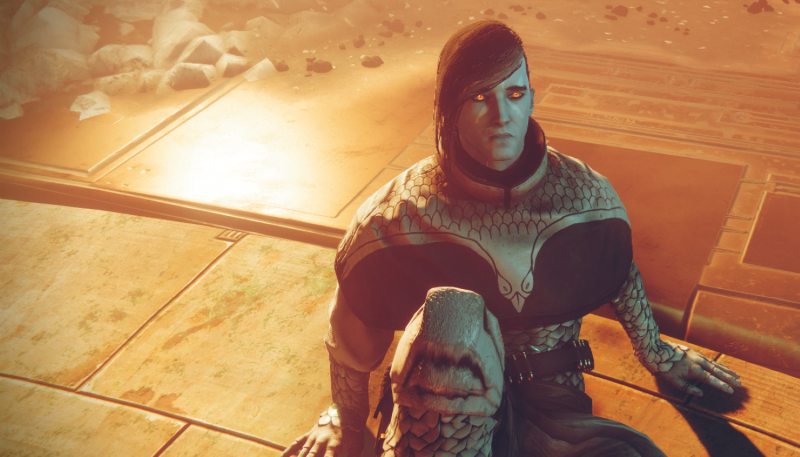
Destiny 2 Season of the Chosen is inching closer to closer towards completion, but this week's step in the Proving storyline featured an incredibly satisfying apex of narrative design that left many feeling pleasantly shocked by this game's turn of events. Season of the Chosen is vital for many reasons, with the most important one being that it marks a significant turning point for Bungie and the future of the series.
When Destiny 2 first launched, the feedback left little to be desired. While Bungie came right out of the gate with a fleshed-out story that resonated with fans of the space shooter, the endgame content was paltry at best. The first year post-launch was a hellscape, filled with a community fed up with paywalls and apologies to do better from the studio. Then, Bungie announced it was officially separating itself from Activision, the publisher at the head of Destiny 2's launch. From there, the team had more freedom to realize the vision they had to the start, not an experience reliant upon microtransactions and half-cocked content.
The turn for the better first began with the Forsaken DLC. While not the first expansion for the sequel, it was the first expansion to breathe fresh life into the Destiny community truly. Much like the Taken King expansion did for the first game, Forsaken took the tale Bungie was trying to tell to a much deeper place. With a move that should have ended in disaster by killing the fan-favorite Hunter Vanguard Cayde-6, this DLC was a catalyst for a brighter future. That future is very much seen in the Beyond Light expansion's newest season with the latest development of the Proving questline alongside Caiatl, Calus' daughter.
Click here to watch embedded mediaThe new season's premise is that Zavala and the rest of the Guardians have come to a shaky truce with the Cabal with Caiatl at the helm. To prove their worth, Guardians had to take to the Proving Grounds to fight the best of the best when it comes to the Cabal fleet. Each week brought a new step, including some investigative work with The Crow. This reincarnated iteration of Cayde-6's killer, Uldren Sov, is a character many weren't expecting to like at all but with this season? Many of us grew not only to like him but to love what he brings to the table.
I previously wrote about how I hated how much Bungie made me love this character, even knowing the motivations and manipulation that Uldren went through. That didn't matter to me, the endgame was still the same: Cayde, my favorite character, was dead and by his hand. I wanted to hate Crow, even knowing that wasn't fair. While I was prepared to possibly not totally despise him, I wasn't prepared to empathize with him and appreciate his character. After the latest reset and this week's story progression, I can safely say that he is now my favorite character out of the entire franchise. Boy lemme tell, that turn of events was shocking to me, but here we are.
Spoilers ahead
There is a distinct parallel that is flooding Destiny communities. I've seen the below image in almost every Facebook group and Discord I'm in. The power this one scene had was felt through the entire player base, and while the Strike leading up to it had a mixed reception, this scene right here had a universal approval from fellow Guardians:
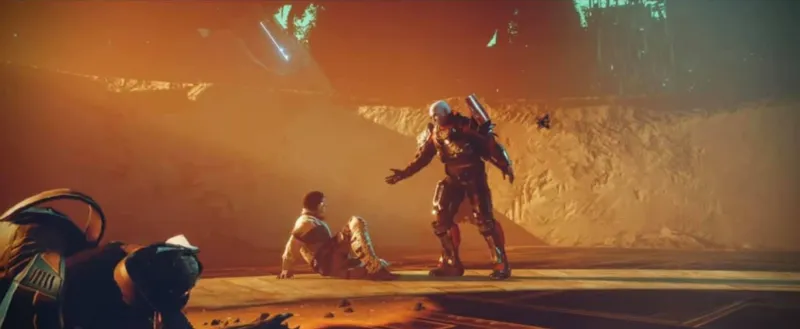
The parallel in question has to do with the Forsaken DLC's below scene when Uldren (now Crow) kills Cayde. The artistry is profound, subtle, and when paired with the color composition to provoke a more emotive response and a signal that the overall story is evolving? It's powerful.
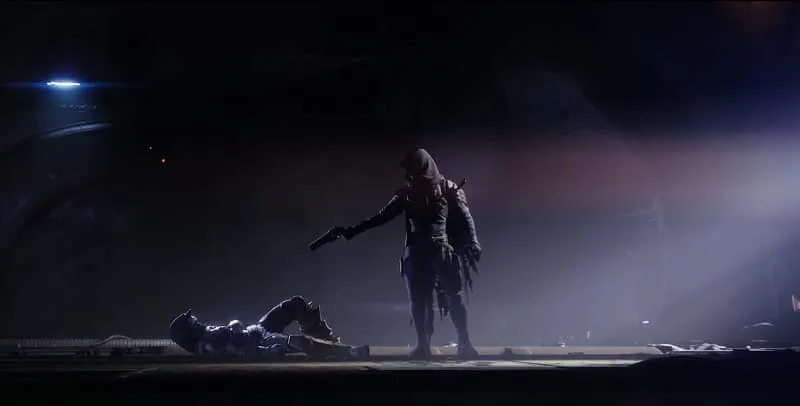
Color theory in entertainment mediums is nothing new. The newest "popular" example is the Snyder Cut of Justice League. The extended version is much darker, aesthetically speaking, and that color choice is meant to evoke a more sinister and powerful feeling when watching the narrative unfold. Games, movies, TV - they all do it; it's an effective means of conveying certain messaging throughout any given story. Both the Forsaken and Shadowkeep expansions were gritty, visually dark, and dripping with desolation. Beyond Light took a different turn with Europa, but the latest chapter of Season of the Chosen went in a completely different direction with vibrant hues, as seen in that first screenshot.
As mentioned in my breakdown of the evolution behind Uldren and his transition into the Crow (which you can read here), his need to hide his face due to others not understanding that he isn't the same man that killed Cayde was heartbreaking. When Bungie started hinting that Zavala, the Titan Vanguard that was arguably impacted by Cayde's death the hardest, was going to uncover Crow's identity soon, many thought that the revelation would be explosive. When Crow instead thwarts yet another assassination attempt against the Titan when speaking with Caiatl, his mask falls away, and Zavala learns the truth. In a moment of complete stillness, I didn't know which direction this was going to go in. I audibly gasped and waited to see what his reaction would be to Crow's identity. That's when the above interaction happened. Instead of vengeance, Zavala offered trust. Support. Understanding. All of which Crow had been bereft of. It was so incredibly heartwarming and really gave off the feeling of "the calm before the storm," especially when looking at the undercurrent of corruption felt within Crow's own story throughout this season and the last.
Caiatl's evolution
But this season was a turning point for more than just Crow and how he fits into the bigger picture; Caiatl was also an interesting development. Throughout this entire season, it was unclear if there would be a peaceful resolution with the Cabal leader or not. After the first assassination attempt failed and the lore was uncovered via the grimoire, the story could have gone either way. When the second assassination attempt failed, Caiatl truly showed off what a badass she is. The way she absolutely bodied the psion that tried to take out our favorite Titan was nothing short of epic. She wasn't a badass because she was given "permission" to be; she's a badass because she's a freaking badass in her own right. She's powerful and not because that power was given to her by Calus. She earned it. Honed it. Bent it to her will, and that alone makes me incredibly excited to see where Bungie takes her story next.
Finally, more than just quests
The entire setup of Season of the Chosen fixed a lot of issues that players had with previous seasons. With seasons of the past, pacing issues have been noted, erratic progression and meaningless grinding all played a part in why previous story arcs were hit or miss. Season of the Chosen took all of that feedback and applied it expertly, giving players a season that feels natural, rewarding, and like the perfect setup for the future of Bungie's narrative. The cinematic parallels, the meaningful objectives, the actual storytelling that occurred all combined to make a gameplay experience that truly feels like a new beginning. Bungie has stated that the Destiny 2 story is far from over. If Season of the Chosen is any indicator, we are in for a wild and incredibly fruitful ride.
What do you think about Season of the Chosen so far? Do you agree that this is a turning point, or did you not vibe with it in a similar way? Where would you like to see Bungie take Destiny next? Sound off in the comment section below. Do it for Cayde.

